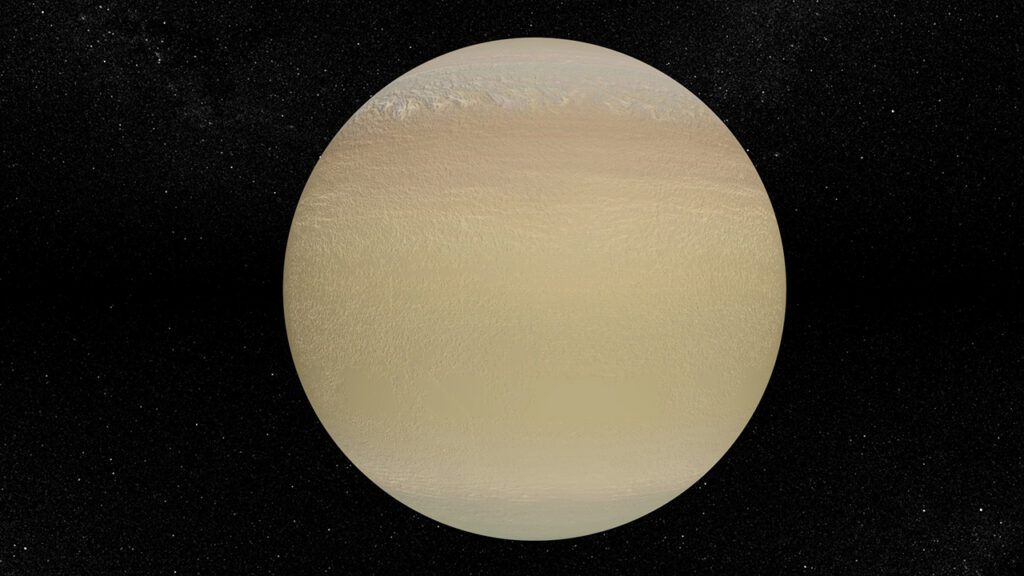Saturn is the sixth farthest planet from the Sun and is a gas giant with a composition similar to Jupiter, mainly composed of hydrogen and helium. In the West, it is named after Saturn, the Roman god of agriculture. In Chinese, it is called “Saturn” (Tuxing), which is related to the Five Elements theory and corresponds to the earth element.

The diameter of Saturn is approximately 116464 kilometers, which is about 9.5 times the diameter of Earth. Its mass is approximately 95 times that of the Earth. Saturn’s atmosphere is mainly composed of hydrogen and helium. It also contains small amounts of other substances such as methane, ammonia, and water vapor. The atmosphere presents a band like structure similar to Jupiter, but the color and features are not very distinct. The most prominent feature of Saturn is its vast ring system. These rings are mainly composed of ice particles as well as some rocks and dust, very thin but wide, extending tens of thousands of kilometers outward from Saturn. People believe that Saturn has a rocky core at its center, surrounded by layers of metallic and molecular hydrogen. The pressure and temperature inside this planet are extremely high, similar to other gas giant planets.
The average distance Saturn travels around the Sun is approximately 9.58 astronomical units. Its orbital period is about 29.46 Earth years, and its average orbital speed is about 9.69 kilometers per second. Saturn’s rotation speed is relatively fast, with a rotation period of about 10.656 hours.
Humans have launched many space probes to study Saturn, such as NASA’s Cassini Huygens mission. The Cassini spacecraft has been orbiting Saturn for over a decade, providing detailed data and images of Saturn, its rings, and satellites.
Leave a Reply